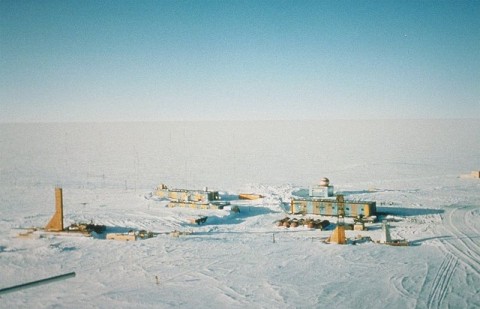Vostok Station is a Russian (formerly Soviet) research station in Antarctica. The station is located on the eastern part of the Antarctic ice sheet, inside the Australian Antarctic Territory (although it is a signatory of the Charter System Antarctic, Australia does not have sovereignty over the territory). In the Vostok station has been measured the lowest temperature on Earth of -89.2 ° C, and below the station Lake Vostok is located, the largest known sub glacial lake in the world.

Vostok research station was built by Second Soviet Antarctic expedition on the 16 December in 1957, during the International Geophysical year and it worked until 1994, when it was temporarily closed. Today, the station is used by Russian, American and French scientists all together.
The station is located about 1300 km from the South Pole at an altitude of 3488m above the sea level and it is the most isolated from all research stations in Antarctica. Its position near the south magnetic pole makes it an optimal place to observe changes in Earth’s magnetosphere. Other fields which are being studied are actinometry, geophysics, medicine, climatology… During the summer in the station there are usually 25 scientists and engineers, while during the winter the number drops to 13.
During the 1970s the Soviet Union drilled a few samples of ice crust at depth of 500-952 m. They are used to study the relationship between oxygen isotopes in ice, which showed that ice from the last ice age begins at a depth of 400 m. This ice core gave information about the living conditions from the past that stretched for up to 420,000 years ago and which has covered four ice ages. For a long time, this core was the only one that covered several ice ages, but it in 2004 the EPICA core exceeded it because it covers a longer time span.
Beside the extremely cold temperatures, there are many other reasons why the life in the Vostok represents one of the most difficult places for human living. Some of them are lack of moisture in the air, lack of oxygen, higher ionization of the air, polar night that lasts approximately 130 days. Acclimation to such conditions may last from one week to two months and it is followed by a headache, pain in the ears, nose bleeding, a sudden increase in blood pressure, insomnia, decreased appetite, vomiting, muscle aches and joint pain and weight loss.